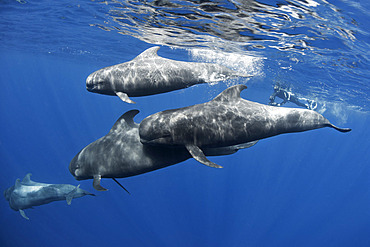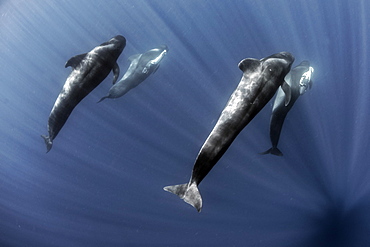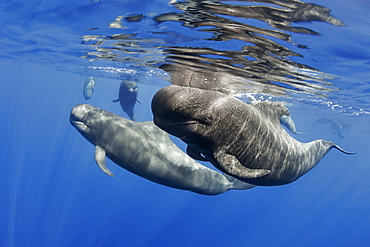Recent searches
Loading...
860-291401 - Green sea turtle (Chelonia mydas) in seagrass - seagrass, sebadal, seba (Cymodocea nodosa). Of all the sea turtles that exist, it is the only omnivorous species, feeding in its subadult and adult state on marine plants and algae. Underwater bottoms of the Canary Islands, Tenerife.
860-291400 - Green sea turtle (Chelonia mydas) in seagrass - seagrass, sebadal, seba (Cymodocea nodosa). Of all the sea turtles that exist, it is the only omnivorous species, feeding in its subadult and adult state on marine plants and algae. Underwater bottoms of the Canary Islands, Tenerife.
860-291229 - STARFISH (Narcissia canariensis). Endemic species. Detail of the tube feet. Marine invertebrates of the Canary Islands, Tenerife.
860-290735 - White spotted octopus (Octopus macropus) on black background. Marine invertebrates of the Canary Islands.
860-290734 - White spotted octopus (Octopus macropus) on black background. Marine invertebrates of the Canary Islands.
860-290736 - White spotted octopus (Octopus macropus) on black background. Marine invertebrates of the Canary Islands.
860-290785 - Sunken excavator. Despite not being heavily colonized by marine species, it can be considered a wreck, or an artificial ecosystem of scenic interest for divers. Underwater bottoms of Tenerife, Canary Islands.
860-290737 - White spotted octopus (Octopus macropus) above bottom. Marine invertebrates of the Canary Islands.
860-290733 - White spotted octopus (Octopus macropus) on black background. Marine invertebrates of the Canary Islands.
860-290272 - Canary fish. BLACK MORAY (Muraena augusti) and TIGER MORAY (Enchelycore anatina), Tenerife, Canary Islands.
860-290325 - Tiger moray (Enchelycore anatina). Fish of the Canary Islands.
860-290328 - Tajinaste blue (Echium auberianum), is an endemic Tenerife plant. Teide National Park, World Heritage Site. Canary Islands.
860-290323 - Planehead filfish (Stephanolepis hispidus) hunting in a sea meadow (Cymodosea nodosa). Fish of the Canary Islands, Tenerife.
860-290271 - contamination: Purple sea urchin (Sphaerechinus granularis).Tenerife, Canary Islands.
860-289959 - Red atlantic ref lobster (Enoplometopus antillensis). Carapace about 15 cm long with circular patterns on each side of the head. It lives in dimly lit environments dome crevices, hollows and caves. Marine invertebrates of the Canary Islands, Tenerife.
860-289962 - Blue Dragon (Glaucus atlanticus). Small slug that measures only about 2 cm and is generally associated with the Portuguese man of war (Physalia physalis), although it also usually appears in intertidal pools. Marine invertebrates of the Canary Islands, Tenerife.
860-290262 - Atlantic Lizardfish (Synodus saurus).Fish of the Canary Islands, Tenerife.
860-290384 - Pilot whale (Globicephala macrorhynchus). Tenerife, Canary Islands.
860-290379 - Grey triggerfish (Balistes capriscus) attracted by an anchor crawling on the seabed. Fish of the Canary Islands, Tenerife.
860-289964 - Grey triggerfish (Balistes capriscus). Fish of the Canary Islands, Tenerife.
860-289961 - Atlantic spotted dolphin (Stenella frontalis). Group of dolphins submerged. Tenerife, Canary Islands.
860-290378 - Orange Coral (Dendrophyllia Ramea). Marine invertebrate, cnidarian. Tenerife, the seabed of the Canary Islands.
860-289558 - Bougainvillea, Garachico, Tenerife, Islas Canarias, Espagne
860-290263 - Atlantic stargazer(Uranoscopus scaber). He lives buried in the sand, with only his two eyes and his mouth sticking out of the bottom. Fish of the Canary Islands, Tenerife.
860-289625 - Sagittaria, Papyrus, Nympheae, Bassin central du Jardin de Aclimatacion de la Orotava, Ravenala madagascariensis, Puerto de La Cruz, Tenerife, Iles Canaries, Espagne
860-290329 - Teide National Park, Tenerife. Sea of ??clouds, south of the island. It is caused by the trade winds, which push the clouds against the summit, usually forming between 800 and 1000 meters of altitude. Canary Islands.
860-289960 - Atlantic spotted dolphin (Stenella frontalis). Group of dolphins submerged. Tenerife, Canary Islands.
860-290273 - Canary fish. BLACK MORAY (Muraena augusti), Brun Moray; (Gymnothorax unicolor) and TIGER MORAY (Enchelycore anatina), Tenerife, Canary Islands.
860-290324 - Foureyed sole (Microchirus ocellatus). Pleuronectiformes (Flatfishes), Soleidae (Soles). Fish of the Canary Islands, Tenerife.
860-290257 - Pilot whale (Globicephala macrorhynchus). Tenerife, Canary Islands.
860-290383 - Calderon tropical (Globicephala macrorhynchus) with scars and scratches caused by interactions between individuals of the same species, although so many marks are not common. Tenerife, Canary Islands.
860-290260 - BLUE DRAGON (Glaucus atlanticus). Small slug that measures only about 2 cm and is generally associated with the Portuguese man of war (Physalia physalis), although it also usually appears in intertidal pools. Marine invertebrates of the Canary Islands, Tenerife.
860-290326 - Tajinaste rojo (Echium wildpretii), is an endemic Tenerife plant. Teide National Park, World Heritage Site. Canary Islands.
860-290261 - Grey triggerfish (Balistes capriscus). Fish of the Canary Islands, Tenerife.
860-289559 - Eucalyptus, Plaza de La Libertad, Iglesia de Santa Ana, Garachico, Tenerife, Islas Canarias, Espagna
860-290381 - Zooplankton. Pelagic micro organism that is part of plankton (unidentified species). It lives dragged by the marine currents and it is common to observe it in spring. Marine invertebrates of the Canary Islands.
860-290258 - Pilot group. Calderon (Globicephala macrorhynchus) with naturalist photographer. Tenerife, Canary Islands. Photograph taken with the mandatory permits of the MAPAMA.
860-290327 - Tajinaste rojo (Echium wildpretii), is an endemic Tenerife plant. Teide National Park, World Heritage Site. Canary Islands.
860-290385 - Pilot whale (Globicephala macrorhynchus). Tenerife, Canary Islands.
860-289963 - Blue Dragon (Glaucus atlanticus) hanging. Small slug that measures only about 2 cm and is generally associated with the Portuguese man of war (Physalia physalis), although it also usually appears in intertidal pools. Marine invertebrates of the Canary Islands, Tenerife.
860-290259 - BLUE DRAGON (Glaucus atlanticus). A small peacic slug that measures only about 2 cm and is generally associated with the Portuguese frigatebird (Physalia physalis) or the blue button (Porpita porpita) on which it feeds. They can also appear in intertidal pools. Marine invertebrates of the Canary Islands, Tenerife.
860-290382 - Zooplankton. Pelagic micro organism that is part of plankton (unidentified species). It lives dragged by the marine currents and it is common to observe it in spring. Marine invertebrates of the Canary Islands.
860-288204 - Calderón (Globicephala macrorhynchus). Two dead newborns carried by adults, probably their mothers. Being two young, it has been rarely documented. Tenerife, Canary Islands.
860-288540 - Green Turtle (Chelonia mydas), Tenerife, Canary Islands, Spain, Atlantic Ocean
860-288542 - Green Turtle (Chelonia mydas) and diver, Tenerife, Canary Islands, Spain, Atlantic Ocean
860-288536 - Bull Ray (Aetomylaeus bovinus), Tenerife, Canary Islands, Spain
860-288205 - Pilot whale (Globicephala macrorhynchus). A dead neonate carried by an adult, probably his mother. Tenerife, Canary Islands.
860-288203 - Pilot whale (Globicephala macrorhynchus). A dead neonate carried by an adult, probably his mother. Tenerife, Canary Islands.
860-288234 - Blue shark (Prionace glauca). North Atlantic Ocean, Canary Islands.
860-288210 - Pilot whale (Globicephala macrorhynchus). Tenerife, Canary Islands.
860-288207 - Pilot whale (Globicephala macrorhynchus). Tenerife, Canary Islands.
860-288230 - Lightfoot crab (Grapsus adscensionis) in the intertidal. Marine invertebrates of the Canary Islands, Tenerife.
860-288235 - Blue shark (Prionace glauca). North Atlantic Ocean, Canary Islands.
860-288533 - Short-finned pilot Whale (Globicephala macrorhynchus), Tenerife, Canary Islands, Spain, Atlantic Ocean
860-288195 - Blue shark (Prionace glauca). North Atlantic Ocean, Canary Islands.
860-288534 - Short-finned pilot Whale (Globicephala macrorhynchus), Tenerife, Canary Islands, Spain, Atlantic Ocean
860-288538 - Roughtail Stringray (Dasyatis centroura),Tenerife, Canary Islands, Spain, Atlantic Ocean
860-288541 - Green Turtle (Chelonia mydas), Tenerife, Canary Islands, Spain, Atlantic Ocean
860-288532 - Short-finned pilot Whale (Globicephala macrorhynchus), Tenerife, Canary Islands, Spain, Atlantic Ocean
860-288539 - Green Turtle (Chelonia mydas) and diver, Tenerife, Canary Islands, Spain, Atlantic Ocean
860-288537 - Roughtail Stringray (Dasyatis centroura),Tenerife, Canary Islands, Spain, Atlantic Ocean
860-288535 - Violet Sea Urchin (Sphaerechinus granularis), Tenerife, Canary Islands, Spain, Atlantic Ocean
860-288200 - Calderón (Globicephala macrorhynchus). Breeding with an adult, probably his mother swimming on the surface. The fetal lines of the newborn can be perfectly observed. Tenerife, Canary Islands.
860-288194 - Blue shark (Prionace glauca). North Atlantic Ocean, Canary Islands.
860-288209 - Pilot whale (Globicephala macrorhynchus). Tenerife, Canary Islands.
860-288196 - Calderón (Globicephala macrorhynchus). Breeding, neonate swimming on surface. Tenerife, Canary Islands.
860-288231 - Swimming crab (Cronius ruber). Newly cited species in the Canary Islands (2015). Due to its large number of observations it is considered invasive. Marine invertebrates of the Canary Islands, Tenerife.
860-288198 - Calderón (Globicephala macrorhynchus). Breeding, neonate with an adult, probably his mother swimming on the surface. Tenerife, Canary Islands.
860-288206 - Pilot whale (Globicephala macrorhynchus). Tenerife, Canary Islands.
860-288197 - Blue shark (Prionace glauca). North Atlantic Ocean, Canary Islands.
860-288202 - Pilot whale (Globicephala macrorhynchus). A dead neonate carried by an adult, probably his mother. Tenerife, Canary Islands.
860-288233 - Blue shark (Prionace glauca). North Atlantic Ocean, Canary Islands.
860-288162 - Roughtail stingray (dasyatis centura). Tenerife, Canary Islands.
860-288161 - Bottlenose dolphin (Tursiops truncatus). Juvenile playing and jumping on surface. Tenerife, Canary Islands.
832-338042 - Road through Teide National Park, Teneriffe, Canary Islands, Spain
832-338029 - Los Roques in Teide National Park, Teneriffe, Canary Islands, Spain
832-338023 - Rock formation in Teide National Park, Teneriffe, Canary Islands, Spain
832-38683 - The mountain village of Masca, Teneriffe, Canary Islands, Spain, Europe
1113-30091 - Waiter serving champagne, Hotel Villa CortÈs, Playa de las Americas, Teneriffe, Spain
1113-30090 - Menu in candle light, Hotel Villa CortÈs, Playa de las Americas, Teneriffe, Spain
You reached the end of search results
















































































